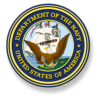













Welcome

© 1997-2021 All Rights Reserved.
USS Mississippi CGN-40 Official Crew Website
Maintained by Jose Diaz



















MISSISSIPPI began her life on August 5, 1978 in a commissioning ceremony featuring President James Carter as the keynote speaker. The world's most advanced
nuclear cruiser was equipped to fulfill multiple tasks in all warfare mission areas: Two pressurized nuclear reactors capable of propelling the ship at speeds in excess of
30 knots; two twin-rail missile launchers for AAW with ASROC capability; two 5", 54 caliber gun mounts for AAW and ASUW; two three-barrel torpedo launchers for ASW;
and a LAMPS helicopter for ASW. MISSISSIPPI completed her sea trials on November 15 eager for further tasking.
MISSISSIPPI completed her first operational cruise to South America on February 13, 1979. A six-month Post-Shakedown Availability included installation of the
AN/SLQ-32(V)III Electronic Warfare Suite, the RGM-84A Harpoon Anti-Ship Missile launching system, and the "Classic Outboard" electronic intelligence data collection
system. Independent operations in the VACAPES operational area in January and February 1980 allowed MISSISSIPPI to complete System Integrated Testing for its
improved Combat Systems suite and prepare for the comprehensive combat systems qualification trials. Following REFTRA in Guantanamo Bay, Cuba, the WSAT in
Roosevelt Roads, Puerto Rico, MISSISSIPPI completed the ASROC Quality Assurance System Test, Caribbean operations, and the last of the SLQ-32(V)III operational
tests. The winter was just as busy as MISSISSIPPI participated in SEABAT 1-81 and COMPTUEX/ASWEX 1-81. MISSISSIPPI returned to Norfolk for a well-deserved
holiday standdown on December 28.
The first nine months of 1981 passed swiftly as she busied herself for her first Mediterranean deployment. On August 10, MISSISSIPPI entered the Mediterranean
with CRUDESGRU EIGHT embarked. She saw international attention when two Libyan jets fired on American assets and were shot down over international waters in the
Gulf of Sidra on August 18, and again on October 6 when Egyptian President Anwar Sadat's assassination led to an emergency sortie from a liberty call in Venice, Italy.
The rest of the cruise passed quickly as MISSISSIPPI completed Operations ILES D-OR and DISPLAY DETERMINATION, and returned to Norfolk to receive the coveted
Battle Force Sixth Fleet Top Hand Award.
MISSISSIPPI's second Mediterranean cruise was every bit as successful as the first and, once again, she found herself in the now familiar waters of the Gulf of Sidra
conducting Freedom of Navigation exercises. Not only did she distinguish herself as AAWC and ASUWC for the NIMITZ battle group, but she earned COMSIXTHFLT
recognition for her ASW activities against Soviet submarine assets with the award of the "Hook 'Em" Trophy. Superior performance had become the hallmark for all
MISSISSIPPI endeavors, and it came as no surprise when she broke her own US Navy record by scoring her fourth consecutive "Excellent" on the Operational Reactor
Safeguards Exam. MISSISSIPPI returned to Norfolk in May and on July 22, Captain Philip R. Olson relieved Captain Raynor A.K. Taylor as Commanding Officer. In
November, she received her second consecutive Battle Efficiency "E" Award and entered the Norfolk Naval Shipyard for a four month overhaul.
After a successful shipyard period in which CIWS was installed to improve her anti-ship missile defense, MISSISSIPPI conducted COMPTUEX 3-84 in July and
READEX 2-84 in preparation for another Mediterranean deployment. Mediterranean Deployment 1-85 found her once again in troubled waters as she conducted
numerous operations off the coast of Lebanon and participated in Exercise National Week. She returned home in May and received her third consecutive Battle
Efficiency "E" Award. After conducting numerous independent steaming operations in the VACAPES, MISSISSIPPI entered a complex overhaul in Norfolk Naval Shipyard
in March 1986. Designed to maintain her as the standard in battle excellence, she was outfitted with the Tomahawk Cruise Missile System, the Standard SM2 (MR)
Missile System, and the SPS-49 Air Search Radar. On October 4, 1986, Captain Michael W. Bordy relieved Captain Philip R. Olson as Commanding Officer.
Even after an extensive shipyard period, MISSISSIPPI continued to set the standard in all areas of performance. After conducting the best LANTFLT PORSE to date,
she finished her complex overhaul in October and was once again eager to get underway. After completing another CSSQT, REFTRA, NGFS Qualification, and Weapons
System Accuracy Trials, she conducted a two-month Northern European cruise and Law Enforcement Operations in the Caribbean. MISSISSIPPI became the first ship
on the east coast to qualify all three Tomahawk watch teams, was selected as a finalist in the 1989 Captain Edward Ney Award for excellence in food preparation, and
broke the all-time Atlantic Fleet record high score at the OUTBOARD team trainer with a score of 98%. She was ready for another deployment and began Med 3-89 on
May 31.
Immediately after Captain Don P. Pollard relieved Captain Michael W. Bordy as Commanding Officer on July 30, MISSISSIPPI was called upon to serve as CWC for
contingency operation in the Eastern Mediterranean in response to the murder of Marine Colonel Higgins by pro-Iranian terrorists. Other deployment successes included
NATO exercise "Display Determination", the U.S. Exercise "National Week 90", and assisting the USS MONONGAHELA combat a shipboard fire and repair her
propulsion plant. On November 10, MISSISSIPPI returned to Norfolk and was met with another Battle Efficiency "E" Award as the top nuclear-powered cruiser in the
Atlantic Fleet.
After conducting three Law Enforcement Operations in the Caribbean, MISSISSIPPI returned to the Eastern Mediterranean theater in 1990. With only five days notice,
she deployed in August as part of the USS JOHN F. KENNEDY Battle Group to support OPERATION DESERT SHIELD and served as flagship for COMDESRON
THREE SIX. In this capacity, MISSISSIPPI was tasked with boarding and searching merchant vessels for cargo bound for Iraq in violation of United Nations resolutions.
After performing escort duties for the USS NITRO, MISSISSIPPI was order to steam at flank speed to a launch area in the Red Sea and, on January 25 and 26, 1991,
launched Tomahawk cruise missiles at designated strategic and military targets deep inside the country of Iraq. On March 28, she triumphantly returned home to Norfolk
for installation of New Threat Upgrade during SRA. On August 1, 1992, Captain William J. Laz relived Captain Don P. Pollard as Commanding Officer.
After leaving the SRA on August 15, MISSISSIPPI conducted a shakedown cruise and completed her third successful CSSQT. After scoring three skin on skin hits and
three warhead kills out of six SM2 (MR) missile shots, she proved that she was perfectly compatible with NTU and was once again ready to sail in harm's way. After
successful completion of the Combat Systems Assessment, MISSISSIPPI found herself back in the Caribbean for Law Enforcement Operations. On May 4, 1993, she
passed through the Panama Canal and crossed the equator at 081 00 W. A new class of shellbacks was initiated into the Navy. Upon return to Norfolk, and after the
second set of Law Enforcement Operations for the year, she won the COMNAVSURFGRU Commodore's Cup for scoring first place in the Surface Warfare Training
Week. In November, MISSISSIPPI embarked COMDESRON 22 and once again pointed her bow south, this time for OPERATION SUPPORT DEMOCRACY in support
of the United Nations embargo on Haiti. Consistent and sustained outstanding performance earned her another Battle Efficiency "E" Award.
After conducting a second OPERATION SUPPORT DEMOCRACY cruise and COMPTUEX 95-1, MISSISSIPPI conducted JFTX early in 1995 in preparation for her
last Mediterranean Deployment. Once again she found herself on the forefront of operations as she entered the waters of the Mediterranean on March 29 and assumed
duties as REDCROWN in support of United Nations sanctions against the former Republic of Yugoslavia. After participating in the multi-national naval exercise "Destined
Glory", on May 21, 1995, Captain Lawrence A. Lewandowski relieved Captain William J. Laz as Commanding Officer. Never far from a leadership role, MISSISSIPPI
assumed duties as AW for air strikes against the former Republic of Yugoslavia. She returned in triumph to Norfolk on September 22. That year she was rewarded with
her fifth Battle Efficiency "E" Award and the Navy Unit Commendation Medal.
February 1996 once again found MISSISSIPPI answering the call to arms. After conducting a port visit to Pascagoula, Mississippi, she was en route to Norfolk with
male dependents when a "Brothers to the Rescue" aircraft was shot down by Cuban military forces. After dropping off her passengers in Key West, MISSISSIPPI
steamed to the waters off Cuba and assumed tactical control of all Naval and Coast Guard assets in the area. Her positive command and control helped diffuse a volatile
situation and, crisis avoided, she one again turned northward.
After conducting her last Law Enforcement Operations in the Caribbean and crossing the equator for the last time, she escorted USS JOHN F. KENNEDY to Northern
Europe. MISSISSIPPI was deactivated on 6 September, 1996 at Norfolk Naval Station, Virginia in preparation for decommissioning at the Norfolk Naval Shipyard in
Portsmouth, Virginia after 18 years of NOTHING SHORT OF 4.0 service. On 31 July, 1997, USS MISSISSIPPI was officially decommissioned and was later towed to
Bremerton, Washington for reactor core removal and storage.
Source: Information from USS Mississippi CGN-40's Decommissioning Program










